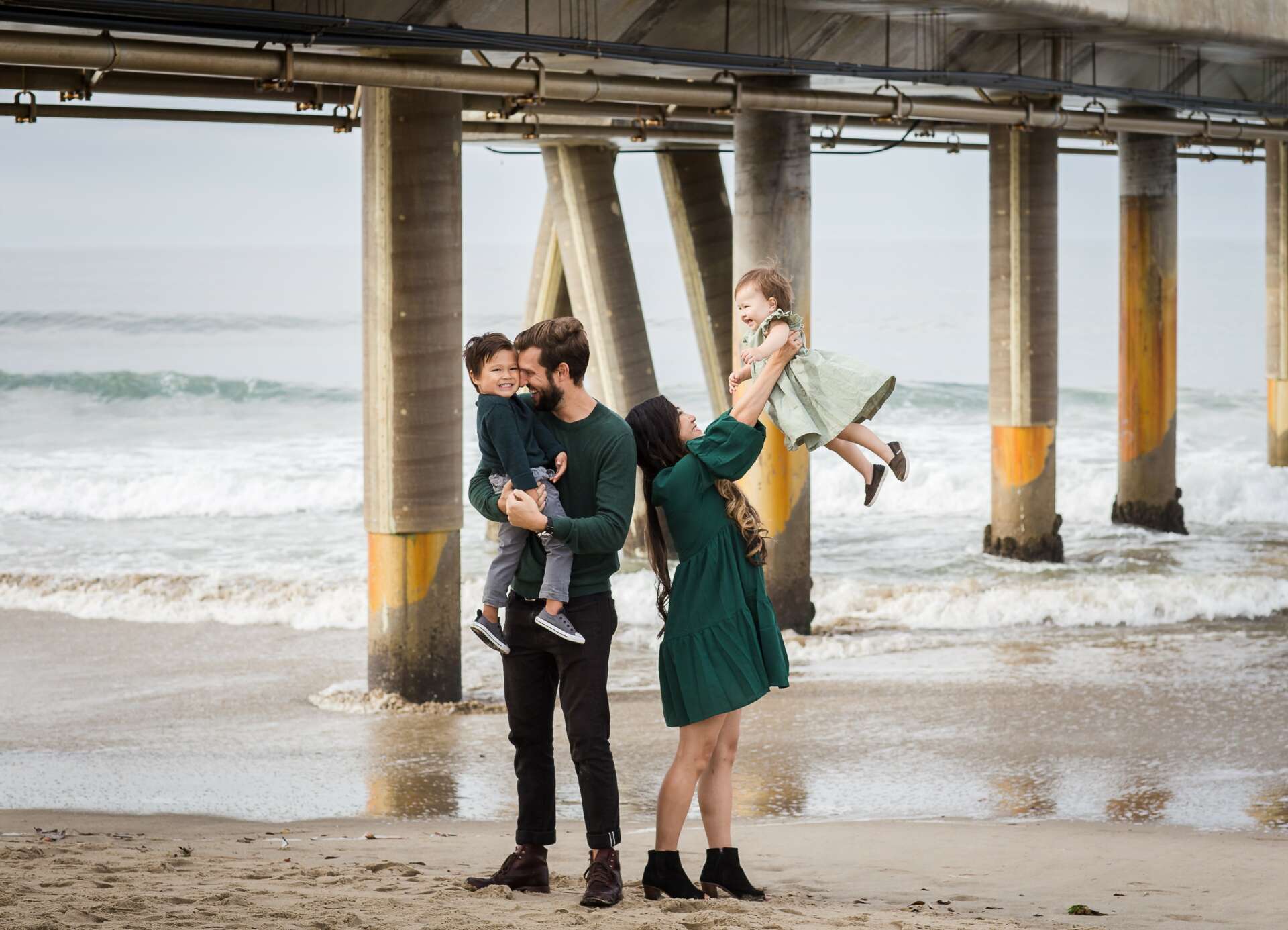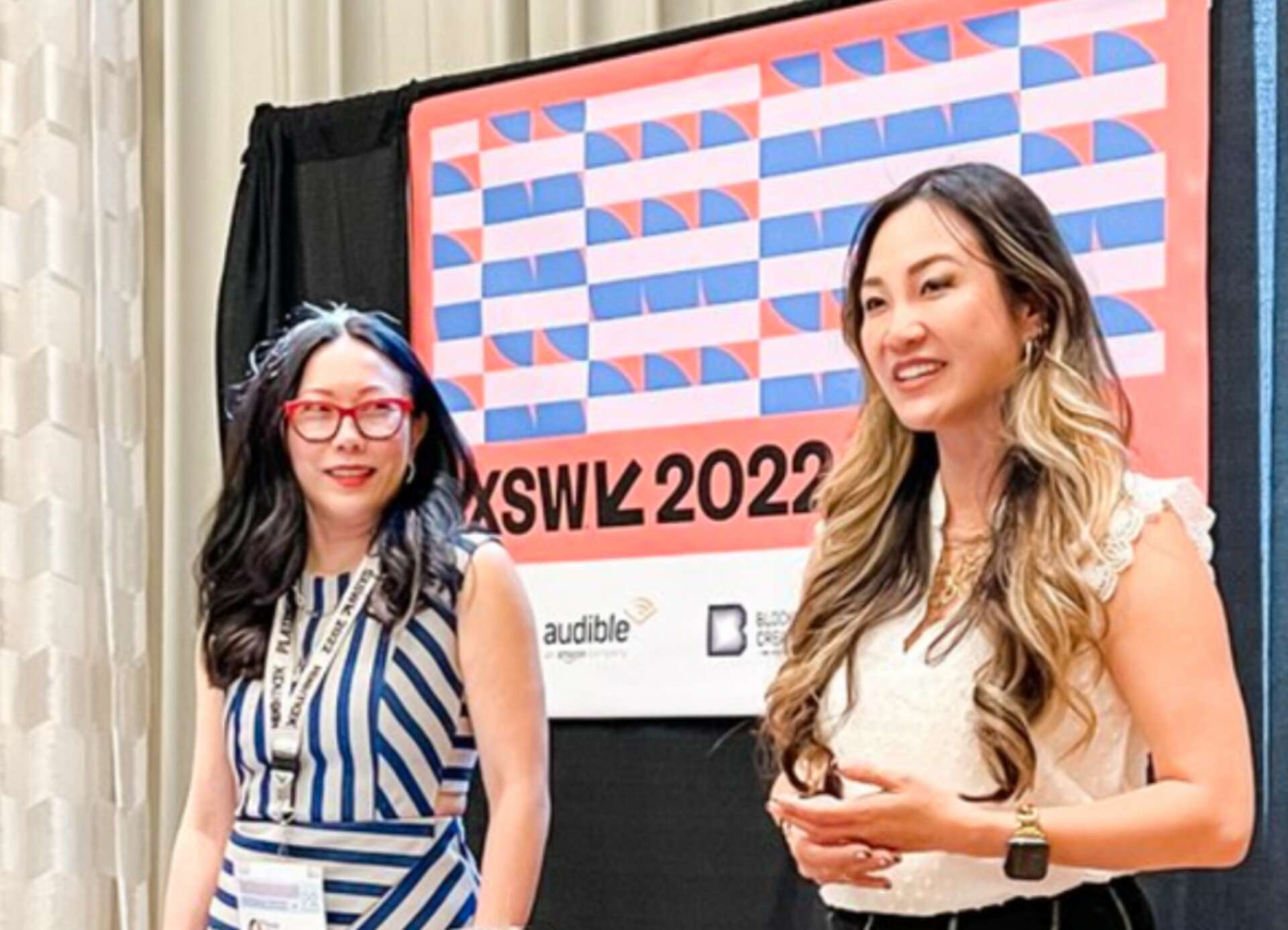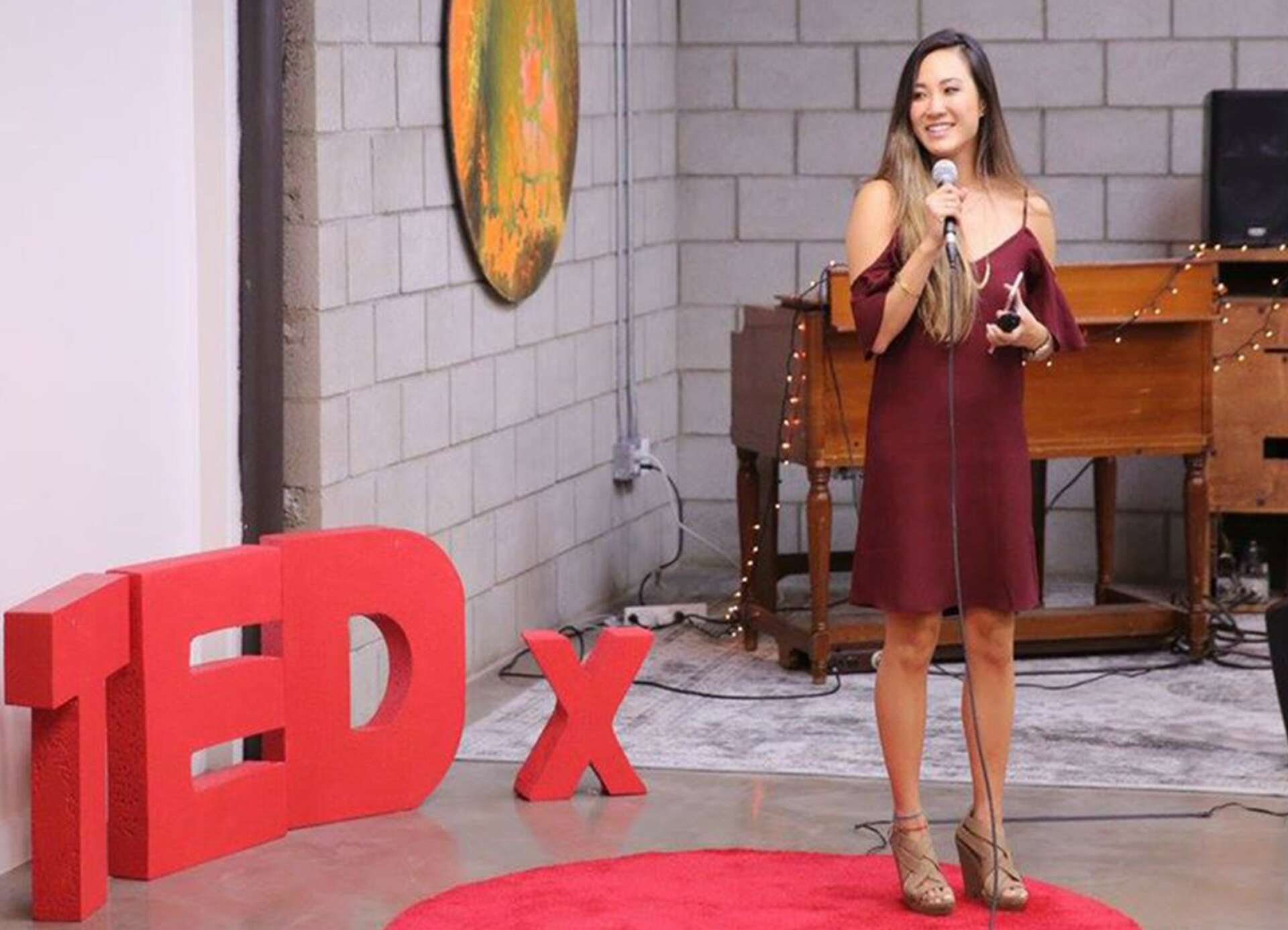We’re excited to introduce you to the always interesting and insightful Bernice Chao. We hope you’ll enjoy our conversation with Bernice below.
Bernice, thanks for taking the time to share your stories with us today Let’s jump right into how you came up with the idea?
The idea for writing “The Visibility Mindset” was brought to my co-author Jessalin Lam and me in January of 2022 when they approached us to write the first book to solve the career gap for Asian Americans. Victoria Savanh of Wiley reached out to the two of us when they saw that we created a global non-profit, Asians in Advertising that addressed the career struggles for Asians within the marketing and advertising industry. At this time, the two of us were meeting so many high-level executives and learning how they were able to climb the career ladder, as well as hosting virtual talks and networking events for the Asian community. We were amazed to know how much visibility was an incredibly important factor for success and how amongst the Asian community it was not a lesson we were taught.


Awesome – so before we get into the rest of our questions, can you briefly introduce yourself to our readers.
I grew up in Cupertino, the heart of Silicon Valley, and have always loved technology and art. I began taking drawing classes at a young age, and when my parents brought home the first Apple color computer, I started creating drawings in Paint. I received a summer scholarship to attend classes at both Stanford and the Academy of Art in high school. I fell in love with the art path between the two, realizing the people I met at the art school felt the need to create and look at the world the same way I did.
Following the footsteps of a creative mom boss I met in high school, I moved to Los Angeles to attend Art Center College and Design on scholarship and majored in graphic design. My first exposure to advertising was at my first job, TBWA\Chiat\Day\Tequila (their digital department), where I worked on some digitally forward projects. We created an original YouTube series for a video game called SOCOM, where we had the top gamers compete in an authentic navy seals hell-week. For a game called Uncharted, we created a treasure hunt where people had to find clues on Craigslist ads, banners, and real life.
Agency life exposed me to a fast-paced and ever-changing work environment that made me realize I enjoyed the idea of making a career out of creative problem-solving. After Chiat, I worked at Omelet, where I worked on more instances of creating dynamic web experiences by creating an online game for the AMC series Burn Notice. I made one of the first Facebook-integrated sites for a movie called Takers. For TNT’s Falling Skies, we sent coded messages that resulted in an interactive live takeover at Comic-con.
Being at the forefront of using new platforms and technology in new ways has always been exciting for me. Advertising has been about making fun and engaging work to connect brands to consumers, and whenever I could find an opportunity to bring some of my values, I would represent them through my work.
At David&Goliath I worked on the 9 Mile Scroll where visitors to the website would have to scroll for 9 miles, mimicking the actual length that students in Sierra Leone had to walk to get to their primary school. I increased women’s visibility through HBO’s #BecauseOfHer campaign, where we showed the women behind HBO’s hottest television shows. With the Kia Super Bowl ad featuring Melissa McCarthy, I was able to raise eco-consciousness.
After David&Goliath I went to R/GA as a Creative Director working on new-economy brands like Google, Netflix, and Amazon Studios. I launched Los Angeles’s first women’s soccer team, Angel City Football Club, and created the Doritos Duet Roulette on TikTok (9.5B views).
For most of my career as a creative in advertising, I was the only female or minority in the room. In most creative departments I’ve worked in, 10% were female, and maybe 2% were people of color, tack on being a mother, and I’m the only one. In my 16 years of experience, I have only worked for one female and never a female of color.
I’m currently the Head of Integrated Creative at Zambezi, the largest female-owned full-service agency in North America. Beyond working on the traditional work in-house, I’m spearheading a new department within the agency called School, a culture-first social department with the most diverse team and vendors.
What gives me purpose in my daily life is not just the projects I create but giving back to the world around me. I realized that though I’m naturally introverted, others found value when I spoke early in my career. Whenever I spoke at an at-risk high school with LightBringerProject or at universities with the ANA, women, and minorities would stay after to ask me questions.
I found that the need for representation and diverse voices in the creative space was strong for myself and others, so I began mentoring at Art Center, MAIP, 3AF, and ThinkLA. I also take at least 3x virtual coffees with those who reach out to me on LinkedIn monthly.
I have hosted TEDx talks since 2014, including nine sold-out events which brought over 1,000 people together. I brought in a diverse group of speakers, from people speaking about robotics and diffusing landmines to re-examining how we look at neurodiversity.
I wanted to help students and juniors who lost their jobs during the pandemic, so I began curating the Creative Corner on my website. This monthly list includes advertising events, inspiration, and job opportunities. My list has been viewed by over 22,000 people and is featured in monthly newsletters for LMU, Miami Ad School, Speakerpost, and The Inturnship. Due to the exposure from the Creative Corner, I was asked to be a feature interviewee in the university textbook Advertising by Design: Generating & Designing Creative Ideas Across Media alongside Renato Fernandez, Julia Neumann, Jayanta Jenkins, and more.
Since 2021 I have been an adjunct professor at Loyola Marymount University’s M.School. I helped to co-create their creative tract after proposing that the best creatives were also strategists. I now teach a class where we compete for the Effies Collegiate, in which last year, two teams were semi-finalists.
In 2021, xenophobia toward Asian Americans was at an all-time high. It gave me a racial reckoning that made me re-examine who I was as an Asian American woman, my place in this country, and the career path of low-representation people like me. There wasn’t an organization that focused on giving Asians working within advertising a community for career growth. So, I decided to create one and found a co-founder with DEI knowledge Jessalin Lam (2021 Nancy Hill Award Winner).
I made the Asians in Advertising website on a Saturday, she reviewed it on a Sunday, and we launched it on a Monday with just one virtual networking event. We were hoping that a few people would care about this idea, but we had 600+ people sign up and over 35k views on my Linkedin post to our amazement. A year later, our organization has created a podcast, hosted 16 events, gained non-profit status, and has 3,600+ members across 20 countries.
To create awareness around the cause, we hosted Breaking Barriers. The first-ever AAPI Advertising Summit focused on career growth with Cindy Gallop and StopAAPIHate. With the money raised, we are giving back to the community by creating 12 scholarships to help close the AAPI advancement gap by pairing recipients with API career coaches.
Our small organization exceeded our expectations and has been featured in Forbes, AdAge, Adweek, The Muse, 3%, SXSW, and more. Asians in Advertising aims to be the industry standard for AAPI equity and resources. We hope that having more AAPI in leadership positions means opening the doors for all unique voices so that they can have a seat at the table.
We realized issues of AAPI in the workplace extended past advertising and into all workplaces, so we are publishing a book called The Visibility Mindset: How Asian Leaders Create Opportunities and Push Barriers. This book is a guide to help Asian Americans find their voice, get noticed, and elevate their career. Although bamboo ceilings, the model minority myth, and other stereotypes may have impeded Asians from leadership ranks for decades, this book will empower individuals to overcome these obstacles and guide them throughout their careers. In addition to simple exercises, strategies, and plenty of real-life examples, each chapter will also include stories from leaders across the industry and how they are constantly breaking barriers. This book provides actionable questions and resources to apply to your life and is essential reading for communities, schools, companies, and allies.



Any resources you can share with us that might be helpful to other creatives?
I wish there were more books like the one we’ve written that covered specific struggles due to Asian American culture. It was extremely lonely and frustrating to have career struggles without the resources to understand why they were happening. I hope The Visibility Mindset is a way for Asians to have the support they need to advance in their careers and to know they’re not alone in their experiences, as well as giving allies the knowledge to assist.
We often hear about learning lessons – but just as important is unlearning lessons. Have you ever had to unlearn a lesson?
I’m a second-generation Asian American and was brought up with cultural learnings from my parents, who immigrated from Taiwan. Culturally I was taught that the path to success in the workplace was to keep your head down, work hard, and don’t rock the boat.
However, after ten years of working, I realized that this way of working wasn’t the secret to success; no matter how hard I worked, I wouldn’t get considered for rich career opportunities, as well see my counterparts get promoted past me. At first, my feelings were that I was inadequate and unworthy of success. However, there was much more at play than just who I was as an employee. I would experience constant moments of isolation ranging from being unable to join in a conversation about college football or hair metal bands, being confused for another Asian person in the office, or not being invited out to the male boss’s house with all the other males on the team.
I’ve been one of the few women and minorities on the creative team for my entire career, let alone the only Asian female. I had to learn how to get past being an introvert and start sharing my experiences with others to learn that I wasn’t alone in these experiences. Through the sharing of stories, I realized that there was a larger issues and that I wanted to help others like me to succeed.
Contact Info:
- Website: https://bernicechao.com/
- Instagram: https://www.instagram.com/hellobernice/
- Facebook: https://www.facebook.com/hellobernice
- Linkedin: https://www.linkedin.com/in/bernicechao/
- Twitter: https://twitter.com/hellobernice
- Other: http://visibilitymindset.com https://www.asiansinadvertising.com


